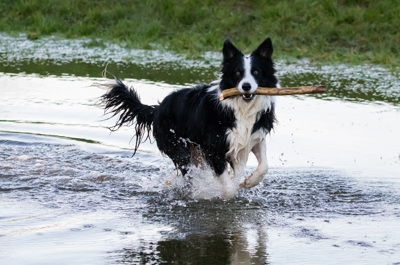
As summer draws closer, NHS Fife is issuing a reminder to people to be on the lookout for blooms of potentially hazardous blue-green algae in the region’s waterways.
Blue-green algae, also known as Cyanobacteria, are tiny organisms which develop naturally in lochs, ponds, reservoirs, rivers and in the sea. They are a common seasonal occurrence and waters which have been affected by agricultural, domestic or industrial discharges are most at risk of developing the algae.
In still waters, the algae can multiply during the summer to such an extent that they discolour the water making it appear green, blue-green or greenish brown. Shoreline mats of blue-green algae may appear and are usually coloured brown to black. Sometimes a scum may form on the surface of the water. This scum can appear in different places at different times, but is most commonly found near the shoreline. Blooms can also occur in slow moving burns and rivers.
Deputy Director of Public Health, Dr Esther Curnock, said:
“People and animals can be affected as a result of direct contact with water affected by blue-green algae and we are advising the public, especially people undertaking water sports, anglers and dog owners, to be particularly vigilant and cautious as the warm and dry weather continues.
“Canoeists, wind surfers and swimmers who come into contact with the algal scum or who accidentally swallow affected water can suffer from complaints such as skin rashes, eye irritation, vomiting, diarrhoea, or pains in muscles and joints. These symptoms are usually mild, but in some cases, can be severe.
“The risk to small animals like dogs is significant over the summer months as they tend to drink more water in the heat and may eat shoreline algal crusts. Dog owners should prevent their pets from coming into contact with water which could be affected.
“Fish caught in waters affected by blue-green algae should not be eaten and should not be fed to pets.”
Where monitoring reveals higher than acceptable levels of algal bloom, warning notices will be posted at the affected waterways. Anyone who finds a loch, pond or river which they suspect is affected by blue-green algae and which is not displaying a warning sign, should contact Fife Council’s Building Standards and Public Safety service at: bss.info@fife.gov.uk
For further information on Blue-Green Algae in Fife, visit: www.fife.gov.uk/bluegreenalgae
You can also download the Bloomin’ Algae app and help monitor blooms across Scotland and the UK: http://www.brc.ac.uk/app/bloomin-algae-app

